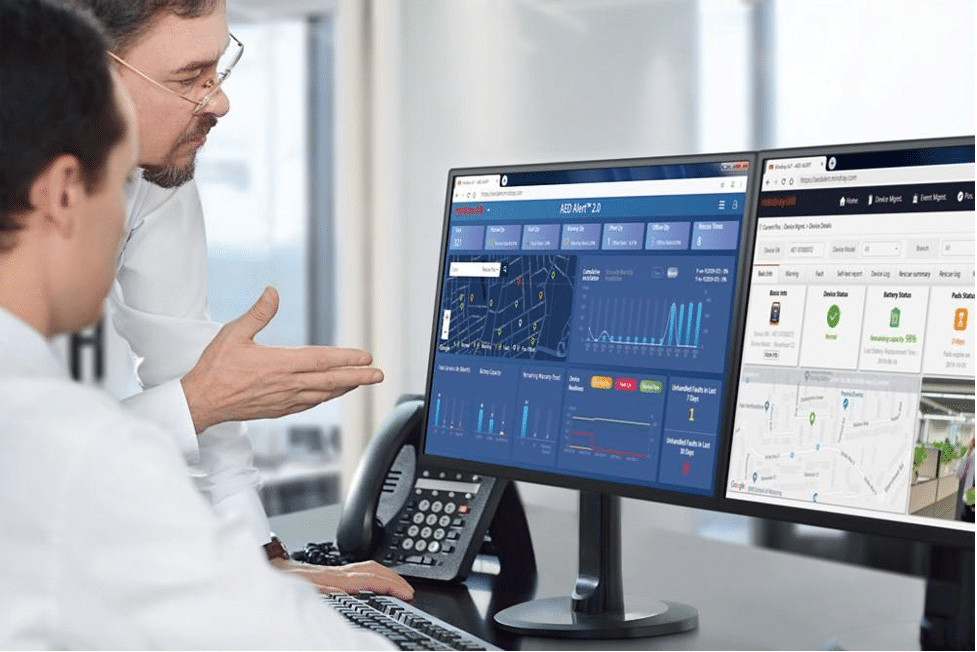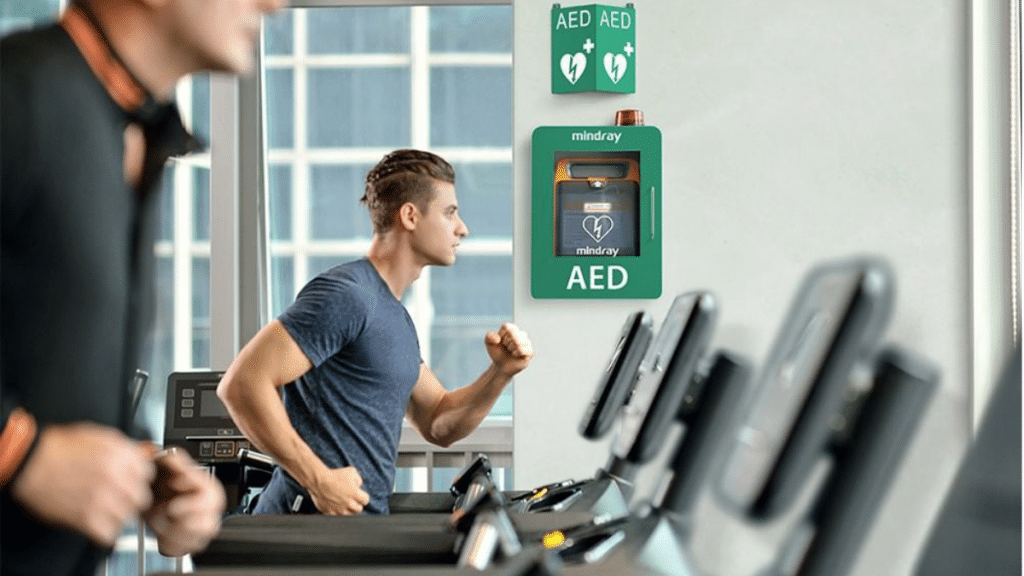OHCA (Out-Of-Hospital-Cardiac-Arrest) is one of the leading causes of death worldwide[1]. To combat these figures, the healthcare industry has introduced AEDs (Automated External Defibrillators) in public places, which have proven to be incredibly beneficial.
A study confirmed that introducing bystander defibrillation in public and residential locations doubled the 30-day survival rate of victims[2]. This emphasizes the importance of nationwide initiatives to provide accessible AED equipment in public places. For this, the correct AED placement is the most important factor to pay attention to.
AED Equipment Placement
For any PAD (Public Access Defibrillation) program to be successful, the response time should be as soon as possible, with the maximum goal being 3 minutes from the victim’s collapse to bringing in an AED unit. To ensure the immediate response time, here are some considerations to keep in mind during AED placement.
▪ High-traffic Area
To ensure that a wider pool of patients can get treatment from the use of AEDs in the event of cardiac arrest, AED should be placed in areas with high traffic. Instead of places only a few people visit, choose open public spaces where most people gather. Schools, places of worship, restaurants, gyms, and hotels are common examples.
▪ Areas with a Higher Risk of SCA
Besides areas with higher traffic, also consider areas where the risk of sudden cardiac arrest (SCA) is reportedly higher. Research shows that some of the top locations that experience higher incidences of cardiac arrest include international airports, large shopping malls, large industrial sites, public sports venues, shelters, senior centers, health clubs, and gyms[3].
▪ Areas that are Easily Accessible
Always place the AED in an area that can easily be accessed and viewed by bystanders. This means AED should be placed at a reasonable height. Ideally, it should be placed at most 48 inches above the ground.
Moreover, it should be easier for bystanders to spot it with clear labels that indicate its placement. Using solid bright colors such as red, green, or yellow can help improve the visibility of AED equipment.
▪ Areas with Surveillance Cameras
Finally, an AED unit is more suggested to be placed in an area with surveillance cameras. This is because the public area managers can be aware of the sudden cardiac arrest emergency through cameras when AEDs are accessed. Moreover, AEDs are a financial investment meant to help save lives in the case of emergencies. To deter theft, the best course of action is to set up the defibrillator near surveillance.

How to Maintain AED Equipment?
For the AED unit to remain functional and error-free, taking measures for its regular maintenance is vital. Here are some key points to consider:
▪ Placement
The first thing to consider is the placement of AED equipment. There will be chances that the AEDs are carried to where a sudden cardiac arrest accident happens and not returned to their original places after being used. So, AED managers should find these AED units back and return them to their AED boxes.
▪ Functioning
Next, make sure the AED is functioning correctly. You should also perform a visual inspection to ensure the AED device doesn’t show signs of damage. Some AEDs have “Ready” or “OK” status indicators at the top that will let the manager know if the AED is ready for use.
▪ Power
Next, ensure the AED has sufficient power for resuscitation. This means checking the internal batteries for remaining power. If the batteries are consumed, have them replaced immediately.
▪ Expiration
Finally, ensure all other parts of the AED equipment are functional and haven’t extended beyond their expiry dates. In particular, check the defibrillation electrode pads and AED batteries are still okay for use. Usually, most batteries and AED pads need to be replaced every 2 to 5 years, depending on the AED brand.
Some AED manufacturers simplify AED maintenance by including alert systems. The Mindray AED-AlertTM 2.0 is a great example of a remote management system that allows you to get notifications of device replacement, pad expiration, battery capacity, and dislocation (if the device is moved from its location).

Mindray AED Solutions for All Locations
Mindray is one of the creative and reliable providers of advanced medical technologies, including AED equipment that helps make healthcare easily accessible for everyone. The company provides some of the advanced AED units you will find today, along with separate AED parts such as AED electrodes, batteries, and remote management software.
Founded over 30 years ago, Mindray has quickly grown in the field of healthcare technologies; today, Mindray’s products are used by clients globally. For more information on the services that Mindray offers, check out their website!
Reference:
[1] Out-of-hospital cardiac arrest: current concepts. Available at:
https://www.thelancet.com/pdfs/journals/lancet/PIIS0140-6736(18)30472-0.pdf (Accessed: 30 Nov 2022)
[2] Bystander Defibrillation for Out-of-Hospital Cardiac Arrest in Public vs Residential Locations. Available at:
https://jamanetwork.com/journals/jamacardiology/fullarticle/2611935 (Accessed: 30 Nov 2022)
[3] Public Locations of Cardiac Arrest. Available at:
https://www.ahajournals.org/doi/full/10.1161/01.CIR.97.21.2106 (Accessed: 30 Nov 2022)

